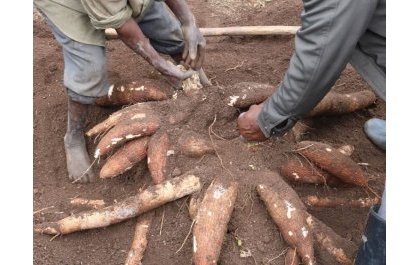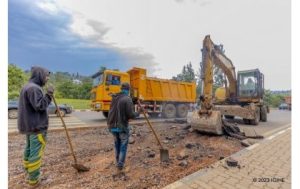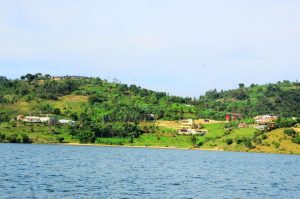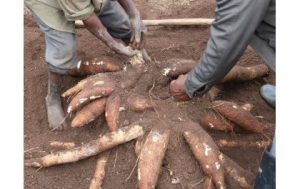Rwanda Introduces Cassava Farming Technique That Can Triple Yields

Agricultural experts have revealed that growing cassava using the ‘Zai pit’ method could significantly boost yields, enrich soil fertility, improve seed multiplication, and strengthen resilience against climate change.
The technique was highlighted during the Cassava Week conference held in Gisagara District, bringing together farmers, researchers, and agricultural stakeholders.
How the Zai Pit Method Works
A Zai pit is created by digging holes measuring 2 meters by 2 meters and 40 centimeters deep. The topsoil removed from the upper 20 centimeters is placed aside and later used during planting.
After digging: Farmers add a basket of organic manure into each pit.
Cassava cuttings are planted in the enriched pit, each with eight nodes, although only two nodes are left above the surface.
Mulch is then applied to cover the top of the pit without touching the planted cutting.
In fields dedicated solely to cassava, pits are spaced 50 centimeters apart.
Once the cassava sprout reaches 25 centimeters, farmers mound soil around the plant using soil taken from around the pit, burying the two exposed nodes. This stimulates the development of additional cassava roots, effectively doubling the potential yield.
This method can yield up to 75 kilograms per plant, depending on conditions.
Farmers Report Dramatic Increases in Yields
Césarie Kantarama, Executive Director of the farmers’ organization Sendicat Ingabo, said the Zai pit technique has the potential to dramatically increase productivity up to three times more than traditional methods while also conserving soil moisture and producing quality planting material, a persistent challenge in the Amayaga region.
She explained: “Where a farmer would normally plant 10,000 cuttings using the traditional system, the Zai pit method requires only 1,000 per hectare, yet the yield increases more than threefold. Land previously producing 14 tonnes can now produce between 40 and 70 tonnes per hectare.”
Augustin Ntivuguruzwa, who cultivated two hectares using the improved method, testified to its effectiveness. “In the past, traditional ridges produced almost nothing. Today, even small plots give high yields. On one hectare, I expect to earn up to 20 million Rwandan francs, something that was impossible before, and I used only 10% of the usual seed,” he said.
Similarly, farmer Alexia Mukamusoni harvested 30 tonnes from just half a hectare five times more than she previously produced from a full hectare. “I used to farm three hectares traditionally, but now this new method gives me the same harvest from a much smaller area. At trade fairs in Kigali, people are amazed by the size of my cassava. It has become profitable,” she added.
Government Encourages Adoption of Modern Techniques
The Southern Province Governor, Kayitesi Alice, urged farmers to strictly follow recommended techniques to sustain the impressive gains. “Applying fertilizer in cassava fields is not optional whether organic or mineral, it significantly increases productivity. By 2029, we want nationwide production to double, and that will only happen if farmers adopt modern practices,” she said.
She also encouraged farmers to insure their cassava crops, emphasizing its importance as a key economic crop.
Currently, nearly 500 hectares across the country have been cultivated using the Zai pit system, along with 500 demonstration plots established in 10 major cassava-growing districts to help farmers learn proper techniques.
If you want this article edited for radio broadcast, shortened, or expanded into a feature, just let me know!

SUBSCRIBE TO OUR NEWSLETTER












